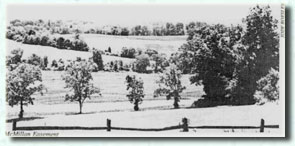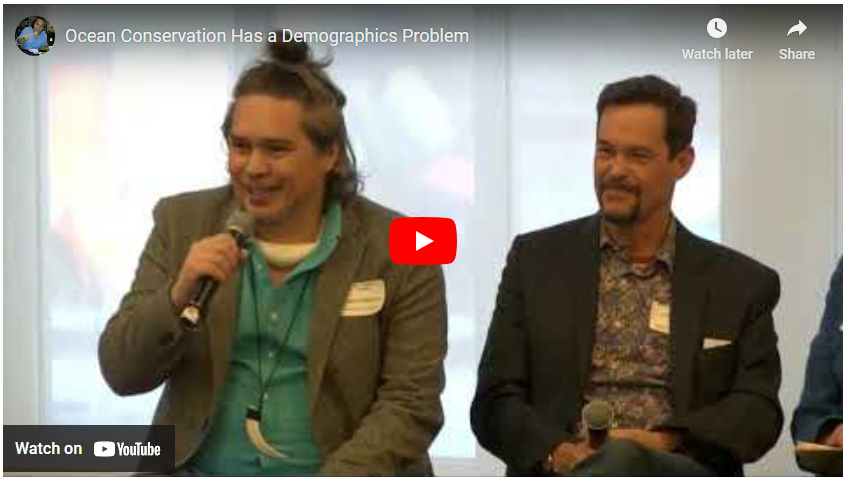 In a world where words like sustainability are used in many contexts with widely varying meanings, we forget that the environmental community was once very choosy in its wording. Terms have specific meanings such that a single word can communicate a philosophy and accompanying ethics. Conservation and preservation are two such terms. The first denotes an effort to sustain a space or resource for perpetual use. Preservation denotes a fortress-like approach to nature, walling off human influence in order to maintain pristine “wilderness”. The terms are linked to big figures in American history, each of whom established a land ethic according to their philosophy now codified in US law.
In a world where words like sustainability are used in many contexts with widely varying meanings, we forget that the environmental community was once very choosy in its wording. Terms have specific meanings such that a single word can communicate a philosophy and accompanying ethics. Conservation and preservation are two such terms. The first denotes an effort to sustain a space or resource for perpetual use. Preservation denotes a fortress-like approach to nature, walling off human influence in order to maintain pristine “wilderness”. The terms are linked to big figures in American history, each of whom established a land ethic according to their philosophy now codified in US law.
Preservation
The preservation movement was started by John Muir, who founded the Sierra Club and expounded the value of American wilderness as part of the country’s culture and identity. He advocated that these iconic wildernesses be preserved for future generations as part of that cultural heritage and quickly gained the ear of movers and shakers at the time. Followers of Muir’s preservation ethic were responsible for creation of the National Park Service and the wilderness system.
The initial proving ground for the preservation ethic was what is now Yosemite National Park. Photos by Ansel Adams helped claim this region as the iconic American frontier. Yosemite represented the last pristine wilderness showing what settlers conquered as they claimed the Western frontier and adapted to America’s wild spaces. Of course, this storied history neglects the native history in Yosemite, as they were forcibly removed in the process of preserving America’s new European heritage.
The preservation ethic has since been codified in the Wilderness Act of 1964, which defines wilderness as:
A wilderness, in contrast with those areas where man and his own works dominate the landscape, is hereby recognized as an area where the earth and its community of life are untrammeled by man, where man himself is a visitor who does not remain. An area of wilderness is further defined to mean in this Act an area of undeveloped Federal land retaining its primeval character and influence, without permanent improvements or human habitation, which is protected and managed so as to preserve its natural conditions and which (1) generally appears to have been affected primarily by the forces of nature, with the imprint of man’s work substantially unnoticeable; (2) has outstanding opportunities for solitude or a primitive and unconfined type of recreation; (3) has at least five thousand acres of land or is of sufficient size as to make practicable its preservation and use in an unimpaired condition; and (4) may also contain ecological, geological, or other features of scientific, educational, scenic, or historical value.
In short, parts of America were to be preserved for the sake of pristine nature, as a snapshot of the land European settlers first encountered upon coming to America and traveling West. Wilderness has some additional benefits, however, that have since been recognized. This list is far from exhaustive: breeding grounds and nursery habitat, a research site to study ecology (somewhat) unaffected by humans, recreation, biodiversity and rare species protection, and as a source of population of wild animals for other spaces.
Conservation
For those whom pristine nature begs the question ‘but then where do the people go’ subscribe to Gifford Pinchot’s conservation ethic. He believed firmly that humans belong in their environment, as inhabitants and stewards. While head of the US Forest Service (appointed by Teddy Roosevelt), he codified an ethic of use – a land ethic in which humans and nature could happily co-exist. This ethic relies heavily on scientific understanding of the connection between humans and nature.
The forest service has evolved but still adheres to its mission statement, now nestled within the US Department of Agriculture. The association with agricultural policy is worth noting – embodying the ethic of caring for lands while they simultaneously provide for a human population – a diverse human population with a multitude of needs and multiple uses. The Forest Service today summarizes their mission in a short statement – “caring for the land and serving people”.
There is no Ansel Adams for the conservation movement, or at least not yet. But there are certainly images out there – and in backyards, next or even in our cities, and in other places close to human society. Here’s an example from the Maryland Department of Natural Resources, remembering how Theodore Roosevelt helped begin their conservation program:

The relationship between Pinchot and Muir came to a public climax during debates over damming the Hetch-Hetchy valley to provide water for San Francisco. John McPhee captures the nature of their unusual relationship in his book “Encounters with the Archdruid”. These legendary discussions solidified the well-meant intentions of both men in the public eye and established the need for both types of land ethic in American space.
Environmentalism Today
Muir and Pinchot have both returned to the soil and passed their legacy to younger leadership. In the wake of their larger-than-life personalities, the terms preservation and conservation have become muddled – and blended with other troublesome, vague terms such as ‘sustainable’, ‘green’, ‘environmental’, etc. But recognizing the philosophy behind environmental protection has huge implications for making sure new policies and programs meet the goals set out at their beginning.
Preservation will continue to provide spaces reserved solely for wildlife, protecting them at vulnerable life stages and providing a refuge free of human influence. But conservation is also necessary to connect humans to their environment through education and cover the wide tracts of land necessary to be stewarded to provide for both humans and nature.

Excellent summary, Amy! It seems like “preservation” is coming back in a big way with marine protected areas.
“Somewhat ironically, it has been the success of the scientifically based, utilitarian-oriented forest management concepts advocated by Fernow, Pinchot and other forestry leaders ar the turn of the century that has, to a very large degree, provided society with the forest abundance that has allowed it the luxury, unique to only a handful of other nations, of deciding how much of John Muir’s brand of forest conservation is appropriate. The fact that this nation now has the resource wealth to consider such choices is itself a clear and positive sign of the success of its past conservation policies” – Doug MacCleery, US Forest Service